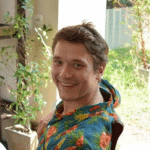The Danish prison system, known for its progressive and rehabilitative approach, stands as a unique model in the landscape of global criminal justice systems. This article aims to explore the structure, policies, and distinctive characteristics of Denmark's approach to incarceration.
The prisons in Denmark are designed to mirror everyday life as closely as possible, minimizing the psychological gap between life inside and outside the prison. This approach is evident in various aspects of prison life, from the architectural design of prison facilities to the programs and policies implemented to support inmates. The system's goal is to reduce recidivism by equipping inmates with the skills, confidence, and support network they need to reintegrate into society upon release successfully.
Key Takeaways
- Danish prisons prioritize rehabilitation and human rights.
- Historical evolution influenced today's rehabilitative focus.
- System includes closed, open, and juvenile facilities.
- Policies emphasize inmate reintegration and education.
- Unique practices include open prisons and skill development.
- Challenges include overcrowding and resource allocation.
- NGOs play a key role in reform and inmate support.
- Visits offer insights into the humane incarceration approach.
The evolution of the Danish prison system
The evolution of the Danish prison system is a reflection of the country's progressive attitudes towards criminal justice and social welfare. Understanding this historical backdrop is essential to grasp the current dynamics of Denmark's approach to incarceration.
Early Developments
The history of the Danish prison system dates back several centuries, with significant reforms and developments occurring over time. Initially, like in many other European countries, Danish prisons were primarily punitive, with harsh conditions and little focus on rehabilitation. However, this began to shift as Denmark moved towards more humane and rehabilitative practices.
20th Century Reforms
The most significant transformations in the Danish prison system took place during the 20th century. Influenced by broader social and political movements across Europe, Denmark began to adopt a more rehabilitative approach to imprisonment. This period saw the introduction of policies that emphasized the dignity and rights of prisoners, alongside efforts to prepare them for reintegration into society.
Modern Era Innovations
In recent decades, Denmark has continued to innovate and refine its prison system. The focus has shifted even more towards rehabilitation, with an increased emphasis on education, vocational training, and psychological support for inmates. These changes reflect a broader societal belief in the potential for personal reform and the importance of reintegration as a key goal of incarceration.
Influence of Social and Political Factors
Denmark's prison reforms have not occurred in isolation but have been influenced by various social and political factors. The country's strong welfare state, commitment to human rights, and egalitarian values have all played a role in shaping its approach to criminal justice. Additionally, public opinion and political discourse in Denmark have often favored policies that emphasize rehabilitation over punishment.
Structure of the Danish Prison System
The Danish prison system is characterized by its well-organized structure, designed to cater to various needs and security levels. This section explores the different types of facilities and their administrative oversight, providing a clear picture of how the system is structured.

Types of Prisons in Denmark
| Type of Facility | Description | Purpose |
| Closed Prisons | High-security facilities with strict rules. | For inmates requiring close supervision. |
| Open Prisons | Less restrictive, liberal environment. | Focus on rehabilitation for lower-risk inmates. |
| Juvenile Facilities | Age-appropriate settings for younger offenders. | Focus on education and preventing criminal careers. |
| Specialized Facilities | Cater to specific groups (e.g., mental health issues). | Provide targeted treatment and support. |
Closed Prisons
These are high-security facilities designed for inmates who require close supervision and control. Closed prisons have stricter rules and limited freedom for inmates, ensuring a higher level of security for both the prisoners and the staff.
Open Prisons
Contrasting with closed facilities, open prisons in Denmark offer a more liberal environment. These are typically for inmates serving shorter sentences or those nearing the end of their terms. The emphasis is on rehabilitation and preparing inmates for reintegration into society.
Juvenile Facilities
Specifically designed for younger offenders, these facilities focus on education and rehabilitation in a more age-appropriate setting. The goal is to prevent the development of a criminal career at an early stage.
Specialized Facilities
Denmark also has prisons that cater to specific groups, such as inmates with mental health issues or substance abuse problems. These facilities provide targeted treatment and support.
Administrative Organization
The Danish Prison and Probation Service oversees the Danish prison system, which falls under the Ministry of Justice. This administrative body is responsible for the management of prisons, implementation of policies, and the overall functioning of the correctional system. They ensure that the practices across different facilities are consistent with national laws and international human rights standards.
Oversight and Regulation
Danish prisons are subject to both national and international oversight. Regular inspections are conducted to ensure that facilities comply with national laws and international agreements, such as the European Convention on Human Rights. These inspections help maintain high standards in the treatment of inmates and the conditions within the prisons.
Policies and Practices
In the Danish prison system, policies and practices are crafted with a dual focus on maintaining security and promoting rehabilitation. This segment delves into the admission process, daily life within the prisons, and the rehabilitation programs that are pivotal to the system’s functioning.
Admission and Classification Process for Prisoners
Initial Assessment: Upon entry, inmates undergo a comprehensive assessment. This evaluation covers criminal history, psychological state, and potential risk factors. The purpose is to classify prisoners appropriately based on their security needs and rehabilitation requirements.
Placement Decisions: Based on the initial assessment, inmates are allocated to either open or closed prisons. This decision is influenced by the length of sentence, nature of the crime, and the inmate's behavior and needs.
Day-to-Day Life in Danish Prisons
Routine: Daily life in Danish prisons is structured to resemble life outside as closely as possible. Inmates engage in work, education, and other activities, fostering a sense of normalcy and responsibility.
Work and Education Opportunities: Prisons offer various vocational training and educational programs. These opportunities are crucial for personal development and prepare inmates for employment post-release.
Health and Welfare Services: Access to healthcare, psychological support, and counseling services is a fundamental aspect of the Danish prison system. These services address the physical and mental health needs of inmates, crucial for their rehabilitation.
Rehabilitation and Reintegration Programs
Skill Development: Programs focusing on skill development, such as vocational training and education, are integral to rehabilitation efforts. These programs aim to enhance employability and self-sufficiency post-release.
Social Rehabilitation: Efforts are made to maintain and develop inmates’ social ties, including family visitation programs and social skills training. This approach helps in the smooth reintegration of inmates into society.
Post-Release Support: The Danish system provides support for inmates after their release, assisting with job placement, housing, and continued counseling. This post-release support is vital in preventing recidivism and ensuring successful reintegration.
Unique Aspects of the Danish Prison System
The Danish prison system stands out for several unique aspects that distinguish it from many other countries' approaches to incarceration. These elements reflect Denmark's progressive attitude towards rehabilitation and human rights in the context of criminal justice.
Focus on Rehabilitation and Human Rights
Rehabilitation-Oriented Approach: The primary goal of the Danish prison system is to rehabilitate rather than merely punish. This is evident in the emphasis on educational and vocational training programs, psychological support, and preparation for reintegration into society.
Respect for Human Rights: Danish prisons are known for their high standards in respecting the human rights of inmates. The facilities are designed to maintain dignity, reduce dehumanization, and prevent the harsh conditions often associated with incarceration.
Innovative Practices
Prisoner Employment: In Denmark, prisons provide various employment opportunities for inmates. These jobs are not just menial tasks but often involve skills that are transferable to the outside world, aiding in the inmates' future employment prospects.
Education Opportunities: Access to education, ranging from basic literacy classes to higher education courses, is a key feature of the Danish prison system. This focus on education supports personal development and increases the likelihood of successful reintegration.
Open Prison Concept: The open prison model, where inmates live in less restrictive conditions and can sometimes engage in community activities, is a notable aspect of Denmark's system. This model helps in acclimatizing inmates to normal life and reduces recidivism.
Comparisons with Other Countries
Lower Recidivism Rates: Denmark's focus on rehabilitation and reintegration has resulted in lower recidivism rates compared to countries with more punitive systems. This success highlights the effectiveness of Denmark’s approach.
International Recognition: The Danish model has garnered international attention and is often cited as an example for prison reform efforts worldwide. Its success in rehabilitating inmates and maintaining a humane environment sets it apart.
Challenges and Criticisms
Despite its progressive approach and many successes, the Danish prison system is not without its challenges and areas of criticism. Addressing these issues is crucial for the ongoing development and effectiveness of the system.
Current Challenges Faced by the Danish Prison System
Overcrowding: Like many prison systems worldwide, certain facilities in Denmark face issues of overcrowding. This not only strains resources but can also hinder the effectiveness of rehabilitation programs.
Staffing Issues: The need for adequately trained staff, particularly in specialized roles such as rehabilitation experts and mental health professionals, is an ongoing challenge. Ensuring a well-trained workforce is vital for maintaining the quality of the system.
Integration of Non-Danish Inmates: With an increasingly diverse inmate population, including a significant number of non-Danish prisoners, the system faces challenges in addressing the specific needs of these individuals, particularly in terms of language barriers and cultural integration.
Criticisms and Debates Surrounding Prison Conditions and Policies
Effectiveness of Open Prisons: While the open prison concept is generally praised, there are debates about its effectiveness, particularly concerning inmates with a high risk of reoffending. Critics question whether this model provides sufficient security and deterrent against crime.
Balancing Security and Rehabilitation: Finding the right balance between ensuring security and focusing on rehabilitation is a constant challenge. Critics sometimes argue that the system may lean too far in one direction, either compromising security or not providing enough punitive measures.
Resource Allocation: There are debates on the allocation of resources within the prison system. Some argue that more funding is needed for rehabilitation programs, while others point to the need for better security measures and infrastructure.
Long-Term Effectiveness: Questions are sometimes raised about the long-term effectiveness of the rehabilitation programs, particularly for inmates serving lengthy sentences or those with severe criminal backgrounds.
Despite these challenges and criticisms, the Danish prison system remains a model for many countries looking to reform their own correctional systems. Recognizing and addressing these issues is an essential part of the system's evolution, ensuring that it continues to balance the needs of security, rehabilitation, and human rights effectively.
Role of International and Local NGOs
Non-governmental organizations (NGOs), both international and local, play a crucial role in the Danish prison system, complementing the efforts of the state in various aspects of prison reform and inmate support. This section highlights the contributions and impact of these organizations.
Overview of NGOs Active in Prison Reform and Prisoner Support
Advocacy and Policy Influence: NGOs often engage in advocacy work, influencing policies related to criminal justice and prison reform. They provide research, propose reforms, and engage in public debates, helping to shape a more humane and effective prison system.
Direct Support and Services: Many NGOs offer direct services to inmates and their families. These services include legal aid, counseling, educational programs, and reintegration support. They play a key role in addressing the gaps in services provided by the state.
Human Rights Monitoring: Some organizations focus on monitoring prison conditions, ensuring that they meet national and international standards. They report on human rights violations and work towards improving the living conditions within prisons.
Contributions and Impact of NGOs
Enhancing Rehabilitation Efforts: NGOs contribute significantly to the rehabilitation of inmates through various programs. These initiatives often focus on education, skill development, and psychological support, crucial elements of successful reintegration.
Supporting Special Populations: NGOs sometimes specialize in supporting specific groups of inmates, such as juveniles, women, or those with mental health issues. Their targeted programs address the unique needs of these populations.
Building Bridges with Society: Many NGOs work to reduce the stigma associated with incarceration. They organize community programs and awareness campaigns, promoting a more inclusive approach to reintegration.
Challenges Faced by NGOs
Funding Constraints: NGOs often operate under tight budget constraints, which can limit their capacity to offer services and implement programs.
Collaboration with State Authorities: While there is usually a cooperative relationship, challenges can arise in aligning the goals and methods of NGOs with those of the prison authorities.
Evaluating Impact: Measuring the long-term impact of their programs on reducing recidivism and aiding reintegration is a complex and ongoing challenge for NGOs.
Visiting a Danish Prison
For those interested in understanding the Danish prison system firsthand, visiting a prison can be an enlightening experience. This section provides essential information for visitors, including rules, procedures, and educational opportunities.
Information for Visitors
Pre-Approval and Security Checks: Visitors must typically undergo a pre-approval process, which includes security checks. This process ensures that visits do not compromise the safety and security of the facility, staff, and inmates.
Scheduling Visits: Visits must be scheduled in advance. The scheduling process varies by facility, and it is advisable to contact the prison directly for specific visiting hours and regulations.
Visitor Conduct and Rules: Visitors are expected to adhere to the prison's rules and conduct guidelines. This may include dress codes, restrictions on items that can be brought into the facility, and adherence to specific behavioral protocols.
Educational and Observation Opportunities
Guided Tours: Some Danish prisons offer guided tours for educational purposes. These tours are often led by knowledgeable staff who provide insights into the daily operations, rehabilitation programs, and the overall philosophy of the prison system.
Academic Research and Study Visits: Prisons may accommodate researchers or students studying criminal justice, sociology, or related fields. These visits are typically more in-depth and may include interviews with staff and observations of various programs.
Community Involvement Programs: Certain facilities engage in community involvement programs where members of the public can participate in educational sessions, workshops, or forums on criminal justice and rehabilitation.
Tips for Visitors
- Understanding the Context: Visitors should familiarize themselves with the Danish prison system and its philosophy before visiting. This background knowledge will enhance the understanding and context of what they observe.
- Respect and Sensitivity: It's important to approach such visits with respect and sensitivity, recognizing that prisons are complex environments with diverse populations.
- Follow Instructions: Adhering to all instructions from prison staff during the visit is crucial for the safety and security of everyone involved.
Related: Facts About Denmark: Exploring the Land of Vikings
Additional Resources
- Danish Prison and Probation Service Annual Reports: These reports offer detailed information on the functioning, policies, and statistical data of the Danish prison system.
- Reports by the European Committee for the Prevention of Torture (CPT): These documents provide insights into the conditions of Danish prisons and the treatment of inmates, based on independent inspections.
- Danish Ministry of Justice Website: The official website offers information on legislation, policies, and news related to the Danish prison system.
- Prison Studies Website: This site contains a wealth of data and research on prison systems worldwide, including Denmark.
- Danish Prison and Probation Service: Contact information for the administrative body overseeing the prison system in Denmark.
- NGOs Involved in Prison Reform in Denmark: A list of non-governmental organizations active in the field of prison reform and inmate support, along with their contact details.


![How to Apply for Danish Citizenship: A Complete Guide ([year]) danish citizenship](https://denmarkexpat.com/wp-content/uploads/2024/05/danish-citizenship-150x150.jpg)

![Immigration to Denmark: How To Immigrate to Denmark in [year] Immigration to Denmark](https://denmarkexpat.com/wp-content/uploads/2023/09/Immigration-to-Denmark-150x150.jpg)

